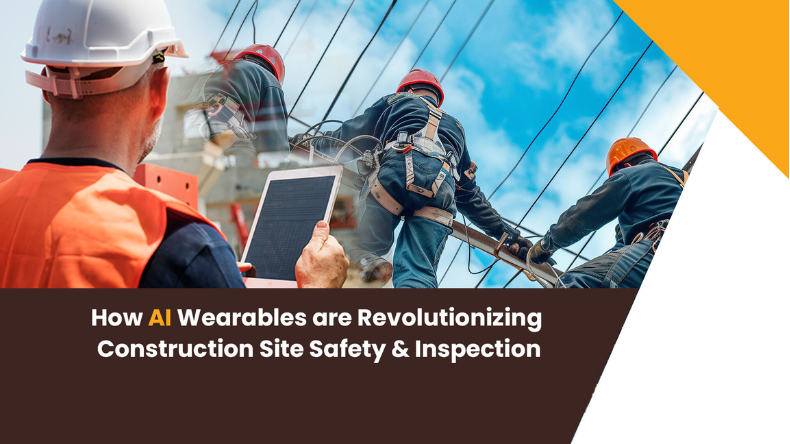Reading Time: 3 minutes
Introduction
Construction sites are inherently risky environments. Despite safety regulations and protocols, accidents still occur. However, a new wave of technology is emerging to improve worker safety: Artificial Intelligence (AI)-powered wearables. These innovative devices are revolutionizing construction by proactively identifying and mitigating risks, leading to a safer work environment for everyone.
The Dangers of Construction Sites
According to the Bureau of Labor Statistics (BLS), in 2021, there were 100,600 nonfatal occupational injuries and illnesses reported in the construction industry alone. Falls, struck-by objects, and electrocutions are some of the leading causes of these injuries.
How Traditional Safety Measures Fall Short
Traditional safety measures rely heavily on worker awareness and adherence to safety protocols. However, human error and unexpected situations can still lead to accidents.
Work Smarter, Not Harder
iFieldSmart empowers your team with AI-driven efficiency to simplify scheduling, boost collaboration, and keep projects on track.
Schedule a MeetingAI Wearables: A Game-Changer for Construction Safety
AI wearables are transforming construction site safety by leveraging a combination of sensors, data analysis, and real-time alerts:
- Sensor Technology: These wearables are equipped with various sensors, including accelerometers, gyroscopes, and GPS, which can track worker movement, posture, and also conduct Construction Site Inspection.
- Data Analysis & Machine Learning: AI algorithms analyze the sensor data in real-time, identifying potential safety hazards based on historical data and pre-programmed scenarios.
- Real-Time Alerts & Intervention: When potential hazards are detected, the AI wearable can trigger immediate alerts through vibrations, sounds, or visual notifications on a connected device. This allows workers to take corrective action before an accident occurs.
How AI Wearables in Construction are Helping
- Reduced Risk of Accidents: By providing real-time hazard warnings, AI wearables can significantly reduce the risk of falls, slips, trips, and other construction site-related injuries.
- Improved Worker Awareness: The constant feedback from the wearables keeps workers more aware of their surroundings and potential safety risks.
- Enhanced Safety Monitoring: Data collected by AI wearables can be used to identify trends and areas for improvement in overall construction site safety protocols.
- Reduced Worker Fatigue: Some AI wearables can monitor worker fatigue levels and alert them when they need to take breaks, preventing accidents caused by exhaustion.
- Data-Driven Safety Decisions: The data collected from AI wearables can be used to develop data-driven safety programs, training initiatives, and to conduct Construction Site Inspection.
Examples of AI Wearables in Construction
- Smart Hard Hats: Equipped with sensors that detect falls or potential head injuries.
- Exoskeletons: These wearable suits can reduce worker fatigue and risk of musculoskeletal disorders.
- Smart Badges/Wristbands: Track worker location and vitals, sending alerts for potential heatstroke or hazardous environments.
- Smart Boots: Provide real-time feedback on worker posture and potential slip hazards.
The Future of AI in Construction Safety
As AI technology continues to evolve, we can expect even more sophisticated wearables and applications in construction quality and safety. Here are some exciting possibilities:
- Predictive Maintenance: AI could analyze worker movement data to predict potential injuries and recommend preventive measures.
- Environmental Monitoring: Wearables could monitor air quality, noise levels, and other environmental factors, alerting workers to potential health hazards.
- VR Safety Training: AI-powered VR simulations could provide more realistic and immersive safety training experiences for workers.
AI wearables represent a significant step forward in Construction Site Safety & Inspection. These innovative devices empower workers with real-time hazard awareness and provide valuable data for continuous safety improvement. By embracing AI technology, construction companies can create safer working environments, reduce accidents, and ultimately build a better future for their workforce.








